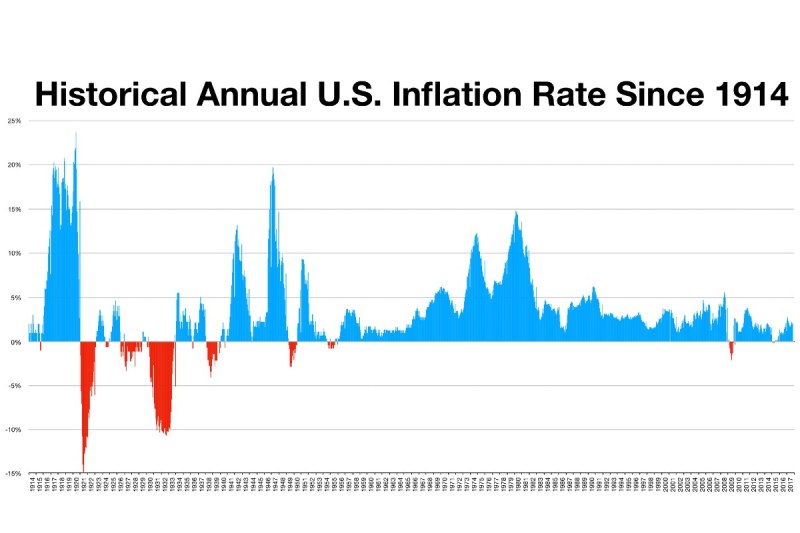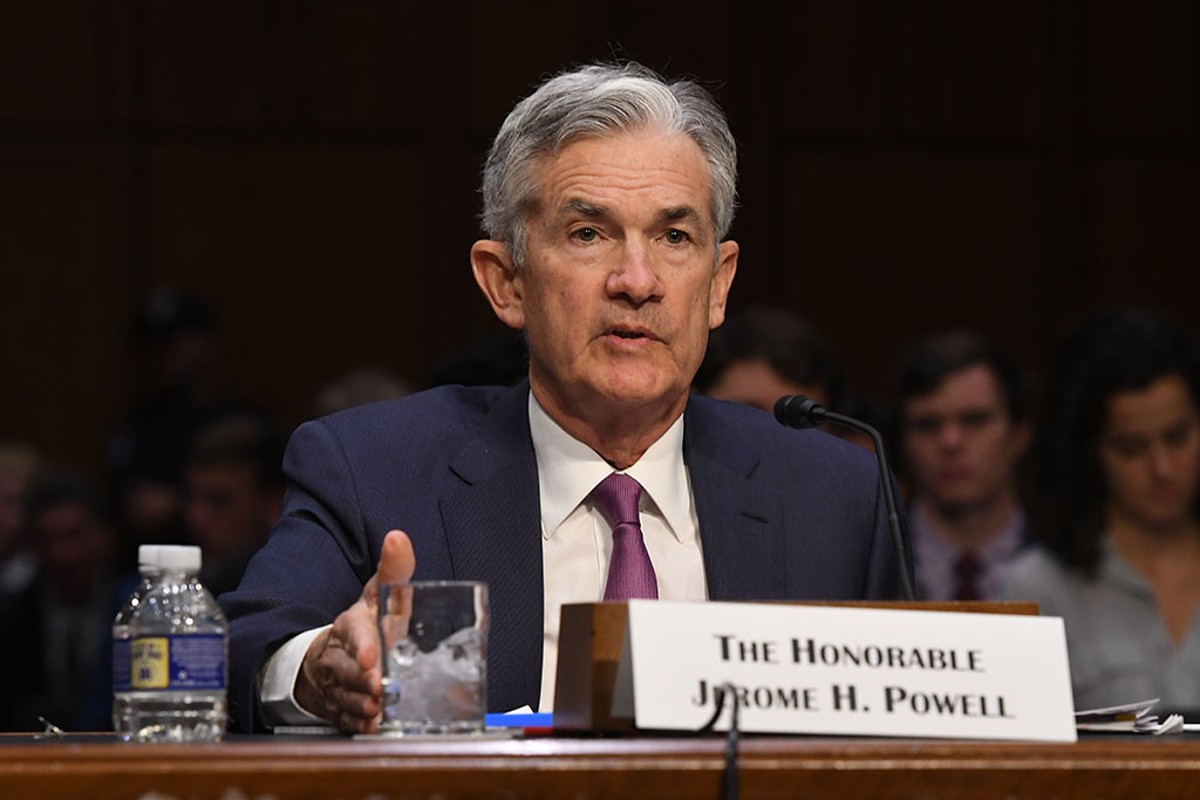Inflation, inflation, inflation. You can’t turn on the news or visit a news site without the word “inflation” coming up almost immediately as nervous newscasters or writers discuss the current inflation rate. Increasing prices affect all goods and products. Therefore, the value of money is a huge concern to consumers.

Consumers, however, don’t always understand what makes prices rise and fall (besides corporate gouging). There are a lot of opinions out there as to what could help U.S. inflation, as the London-based research and data analytics nonprofit YouGov shows. We take a look at the policies and solutions Americans think will drive down U.S. inflation, according to the YouGov survey, and whether or not these policies have historically been shown to get the job done.
Fact: Increasing domestic oil production
Over half of the survey participants (55% to be exact) believe that increasing domestic oil production will help reduce inflation. This makes sense; inflation is most visible at the pump and at the grocery store. According to the United States Congress Joint Economic Committee, survey participants are correct in this point of view. Per the committee’s research, about 21% of the inflation rate (as measured by the Consumer Price Index) can be attributed to rising energy prices. The price for a gallon of gas lept by 50% in 2021, and, after a slight post-summer ease, it still remains over 10% higher in 2022.
Seeing as petroleum products are required for basically everything, it makes sense that increasing its supply would help reduce overall inflation. What do we mean by everything? Well, for one, our country relies primarily on cars for transportation, which are, of course, fueled by gas. The products and services we pay for have to be supplied, which is primarily accomplished through long-haul trucks fueled by combustible engines.
In addition to transportation and supplying every store and U.S. business, many everyday products are derived from petroleum (per L.A.’s KCET public media), from the paraffin wax in cosmetics, chewing gum, and candles to the synthetic polyester that makes up 60% of all clothing. The synthetic fiber in carpet and rugs is sourced from petroleum, as is the poloxamer 407 that helps toothpaste dissolve in our mouths.
By extension, decreasing our reliance on fossil fuels can help to combat inflation. This is a major reason why President Joe Biden is directing the country towards such a large investment in electric vehicles via the 2022 Inflation Reduction Act. The more independent our economy is from gas and oil, the better protected we will be from inflation. Even better, the less black gold we’re pulling from the ground, the better off the environment will be.
Fact: Investing in the supply chain
Running a close second to combating inflation is more emphasis on supply chain problems. More than half of surveyed Americans believe that investing in and strengthening the supply chain will help ease escalating prices. This is also correct, as supply chains are key to producing and delivering the things people need. The challenge here is that we live in a global economy.
The tenuous nature of the global supply chain has never been more apparent than right now. The COVID-19 pandemic that began in 2020 shut down many of the key links in the supply chain. Enduring lockdowns in China continue to limit the elements of many of the key materials that enable our smart technology to run. Perpetual semiconductor chip shortages from Taiwan have backed up car production, driving up new car prices. Agricultural products from Eastern Europe that help feed the world (especially impoverished nations) have slowed due to the Russian invasion of Ukraine. For decades, corporations have chosen to outsource factory production to less wealthy and developing nations, making it more difficult for Americans to get manufactured goods that the U.S. used to lead the world in producing.
These circumstances are clear red flags that we need to be more self-reliant, and the Biden administration and current legislature have made steps to achieve a more independent and durable system. As described by the Joint Economic Committee Democrats, corporations like WalMart and Mattel are praising the federal government for helping to clear ports and get supplies and goods to where they need to go.
Providing competition for these mega-corporations and encouraging small business will also help to ease society’s reliance on single sources. This also happens to be a major tenet of the Biden administration. Per Huffington Post, a three-part antitrust agenda incorporated regulatory appointments, small business loans, and directed executive agencies to “72 different policy areas to increase competition, raise wages, and lower consumer prices in major sectors including health care, agriculture, military procurement, and transportation.”
While these policies have yet to lead to lower prices, they have led to a labor market boom, with almost 8 million new jobs created since Biden took office, according to Bureau of Labor and Statistics numbers. It may take some time to feel the effects, but the Build Back Better, CHIPS, and Inflation Reduction Acts passed by Congress provide significant reinvestment in domestic production and infrastructure improvement, which should eventually help to construct a more durable domestic industry and technology. This should bring prices down at the same time.

Reality: Government regulation of prices
Here we wade into controversial territory. For free-market capitalists, the very notion of regulation is anathema to lower prices and reducing inflation. After all, if one company is price gouging, another should be able to step in and undercut it, right? The problem is that we don’t live in bucolic agrarian hamlets. We live in a modern economy where massive conglomerates wield incredible sway over the marketplace, and an inflationary environment gives these giants the perfect excuse to reach for bigger profits. Research from the Economic Policy Institute, in fact, shows that from 1979 to 2019, corporate profits accounted for about 11% of price growth. Since the pandemic? Record corporate profits account for 53.9% of price increases. This is an unprecedented level of greed. So what should society do about this?
Public pressure, price regulation, consumer protections, and antitrust restrictions are just a few of the options to fight back against this blatant money grab. With abundant capital to spread to political campaigns, however, corporate behemoths wield a lot of power. Remember, it was just a little more than a decade ago that avarice led to the collapse of the housing market — a $5 trillion economic loss that saw over 8 million people lose their jobs and more than 6 million lose their homes (per The Big Short). The fallout? The government bailed out the big banks and one (just one) of thousands of crooks saw time behind bars.
Reality: Cutting taxes and decreasing interest rates
We’re going to lump the next two together because cutting taxes and decreasing interest rates each brings more liquidity into the economy, and each has the effect of encouraging inflation, not reducing it.
Inflation exists when there is too much money flowing into the economy. Goods become worth less when people have more cash in their pocket, which lead to rising prices. The Federal Reserve wields the most direct tool to deflect this inflation in funds: Raising interest rates. Banks borrow money from the Federal Reserve in order to maintain required reserve funds. The Fed charges banks interest for these loans, and, in turn, banks charge similar interest rates to individual borrowers opening credit cards, buying cars or houses, and to business borrowers seeking capital to invest. When it costs more for people and organizations to borrow money, logically, there will be less money borrowed.
The downside of this action is that raising interest rates will discourage spending and investing. It’s a delicate balance. By continuing to raise interest rates, the Fed is trying to halt monetary value loss. Too much meddling, however, threatens to tip the economy into a recession.
Myth: Reducing aid to Ukraine and reducing spending on social services
Speaking of money and the government, there is almost always finger-pointing at how much our country spends on social safety nets, with many blaming the poorest among us for sucking at the taxpayers’ teat. What is more rarely mentioned is the massive amount of money that’s dumped into our military industrial complex.
Per the nonprofit Center on Budget and Policy Priorities, of the approximately $5.8 trillion that will be spent by the federal government in 2022, 13% will be spent on defense, 21% on social security, and 25% on federally-funded health insurance programs like Medicare and Medicaid. Does this increase inflation? Seeing as these are similar amounts to what the federal government has been spending during the past half a century, the answer is likely no.
Department of Defense numbers do show that the U.S. “has committed more than $18.2 billion in security assistance to Ukraine since January 2021.” The worth of this investment is a debatable issue, but, as noted earlier, the resulting geopolitical instability and loss of commodities flowing from Ukraine and from Russia do contribute to rising consumer prices.

Understanding is key
Citizens of this country and of this world are feeling the effects of rising prices and the falling worth of fiat currency. We are fortunate to live in a nation where we do not have to blindly accept the brunt of this disturbance. Wherever our political loyalties may lie, it is our responsibility to understand why our wallets are being hit and to respond with the power of our voice. After all, these freedoms to speak our mind and control who we are ruled by are not inalienable rights enjoyed by most people on this planet.






